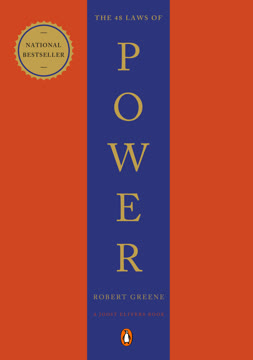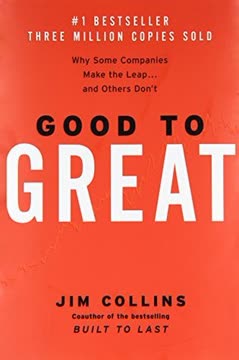つの重要なポイント
1. 自然の道:道に従い、無努力で勝利を得る
「道の道とすべきは、常の道にあらず。名の名とすべきは、常の名にあらず。」
道の本質。 道、すなわち「道」は、宇宙の根本原理を表している。これは完全に説明したり制御したりすることはできないが、観察し従うことができる。この自然の秩序に自分を合わせることで、戦争を含むすべての努力において、無努力で成功を収めることができる。
戦略における実践的応用。 軍事の文脈では、この原則は以下のように翻訳される:
- 事象の自然な流れを理解する
- 戦略を現状に合わせて適応させる
- 最小の抵抗と最大の効率で勝利を収める
道を受け入れることで、指導者は水が自然に下り坂を流れるように、直接的な制御を行うことなく、部隊を成功に導くことができる。
2. 戦略的準備:自分、敵、地形を知る
「敵を知り己を知れば、百戦して殆うからず。」
包括的な知識は力である。 孫子は、戦闘に入る前に戦争のすべての側面について情報を収集することの重要性を強調している。これには以下が含まれる:
- 自己認識:自分の強み、弱み、能力を理解する
- 敵の分析:敵の戦略、資源、動機を洞察する
- 環境要因:地形、天候、その他の外部条件を評価する
準備のための実践的なステップ:
- 部隊、資源、戦略の徹底的な自己評価を行う
- スパイや偵察を用いて敵の情報を収集する
- 戦場と潜在的な環境影響を研究する
- この知識を用いて適応可能な戦闘計画を立てる
これらの要素をマスターすることで、指揮官は情報に基づいた決定を下し、リスクを最小限に抑えながら勝利の可能性を大幅に高めることができる。
3. 欺瞞の技術:心理戦のマスター
「兵は詭道なり。」
軍事戦略における心理戦。 孫子は、戦争が単なる物理的な対立ではなく、敵を出し抜くことでもあると認識している。欺瞞は、直接的な対立なしに優位に立つための重要な役割を果たす。
欺瞞戦術の主要な側面:
- 強いときに弱く見せ、弱いときに強く見せる
- 敵を罠に誘い込むために混乱を装う
- 偽情報を用いて敵を誤導する
- 敵の情報を混乱させるために活動や無活動の幻影を作り出す
欺瞞の実践:
- 敵の期待を包括的に理解する
- 信じられる偽の物語や行動を作り出す
- 欺瞞の手段を一貫して維持する
- 簡単に発見されないように複数の層の欺瞞を使用する
欺瞞の技術をマスターすることで、指揮官は敵の認識と行動を操作し、敵が犯すミスを利用して勝利を収めることができる。
4. 適応力と柔軟性:変化する状況に対応する
「水はその流れる地形に従ってその道を決める。兵士は対峙する敵に応じて勝利を得る。」
戦略の流動性。 水がその容器に適応するように、成功する軍事戦略は柔軟であり、変化する条件に対応するものでなければならない。この原則は、硬直した計画を避け、リアルタイムの情報と状況に基づいて戦術を調整する能力を育むことの重要性を強調している。
適応力の主要な側面:
- 戦場の状況に対する絶え間ない警戒と認識
- 条件が変わったときに計画を放棄または修正する意欲
- 新しい戦略の迅速な意思決定と実施
- 部隊を多才で対応力のあるものに訓練する
実践的な適応力の応用:
- 様々なシナリオに対する複数の緊急計画を立てる
- 情報の迅速な伝達のための明確な通信チャネルを確立する
- すべての指揮レベルでのイニシアチブと意思決定を奨励する
- 訓練演習で予期しない状況に適応する練習を定期的に行う
適応力を受け入れることで、軍事力は潜在的な挫折を利点に変え、予測不可能な状況でも優位を保つことができる。
5. 最小の行動、最大の影響:無努力のリーダーシップの力
「戦わずして敵を屈服させることが最上の戦術である。」
戦争における効率性。 孫子は、最小の努力と資源で勝利を収めることを提唱している。このアプローチは、力を節約するだけでなく、損失や付随的な被害の可能性を減らす。
最小の行動の主要な原則:
- 敵の行動を抑止するための戦略的な位置取り
- 直接的な対立を避けるための外交的および心理的戦術の使用
- 戦闘なしで降伏を強いるための敵の弱点の利用
- 慎重に計画された決定的な動きで目標を達成する
最小の行動戦略の実践:
- 徹底的な準備と情報収集に焦点を当てる
- 敵の攻撃を抑止するための強さの評判を育む
- 敵の位置の重要な脆弱性を特定し、標的にする
- 最小の力で最大の影響を与えるための正確でタイミングの良い行動を使用する
無努力のリーダーシップの技術をマスターすることで、指揮官は資源を節約し、犠牲者を最小限に抑えながら勝利を収めることができ、最終的にはより持続可能で破壊的でない紛争を実現することができる。
6. 団結と結束:チームの強さを育む
「兵士を子供のように扱えば、彼らは最も深い谷にもあなたに従う。彼らを愛する息子のように見なせば、彼らは死に至るまであなたを支える。」
忠誠心と信頼の構築。 孫子は、指導者と部隊の間に強い絆を築くことの重要性を強調している。この団結は士気を向上させるだけでなく、軍事力全体の効果を高める。
団結を育む主要な側面:
- 兵士を尊重し、思いやりを持って扱う
- 公平な待遇と報酬制度を確保する
- 困難や勝利をチームとして共有する
- 目標と期待を明確に伝える
結束を築くための実践的なステップ:
- すべてのレベルの部隊と個人的な関係を築く
- チームビルディングの演習や共有体験を実施する
- 個人およびグループの成果を認識し、祝う
- 部隊に期待される価値観や行動を示すことで模範を示す
団結と共有の目的を創造することで、指導者は部隊を限界を超えてパフォーマンスさせ、逆境に直面しても回復力を維持することができる。
7. 倫理的な戦争:紛争と慈悲のバランス
「最良の勝利は、実際の敵対行為が始まる前に敵が自ら降伏することである... 戦わずして勝つことが最善である。」
戦争における道徳的考慮。 孫子は、行動の長期的な結果を考慮した紛争への微妙なアプローチを提唱している。この原則は、目標を達成しながらも、被害を最小限に抑え、将来の平和の可能性を保つことの重要性を強調している。
倫理的な戦争の主要な側面:
- 可能な限り非暴力的な解決策を優先する
- 捕虜や民間人を人道的に扱う
- 資源やインフラの不必要な破壊を避ける
- 行動の後の影響を考慮する
倫理的な戦争の実践:
- 軍事行動に訴える前に外交的な選択肢を尽くす
- 民間人の犠牲を最小限に抑えることを優先する交戦規則を確立する
- 紛争後の再建と和解の計画を立てる
- 倫理的な意思決定と文化的感受性の訓練を部隊に行う
戦争において倫理的な原則を遵守することで、指導者は軍事目標を達成しながらも道徳的な権威を維持し、紛争後の解決と平和構築を容易にすることができる。
8. 情報収集:スパイの重要な役割
「微妙であれ!微妙であれ!そしてスパイをあらゆる業務に使用せよ。」
情報の力。 孫子は、戦争における情報の価値を大いに強調している。スパイは、直接的な交戦を必要とせずに紛争の結果を決定する重要な情報を提供する。
スパイの種類とその役割:
- 地元のスパイ:敵国の住民
- 内部スパイ:敵の役人
- 二重スパイ:敵のスパイを自分の側に引き込む
- 消耗スパイ:偽情報を広めるために使用される
- 生還スパイ:貴重な情報を持ち帰るスパイ
スパイの効果的な使用:
- 多様な情報提供者のネットワークを構築する
- スパイの身元と安全を保護する
- 複数の情報源を通じて情報を検証する
- 情報を戦略的な決定と欺瞞戦術に活用する
スパイ活動の技術をマスターすることで、指揮官は敵に対して大きな優位性を得ることができ、優れた知識と準備を通じて戦闘が始まる前に勝利を収めることができる。
9. 地形の掌握:環境を活用して優位に立つ
「賢い戦闘員は敵に自分の意志を押し付けるが、敵の意志を自分に押し付けさせない。」
環境戦略。 孫子は、戦争において地形を理解し活用することの重要性を強調している。環境を掌握することで、指揮官は自軍に有利な条件を作り出し、敵を不利な立場に追い込むことができる。
地形掌握の主要な側面:
- 有利な位置を特定し占拠する
- 自然の特徴を防御や隠蔽に利用する
- 地形が移動や物流に与える影響を理解する
- 異なる地形に合わせた戦術を適応させる
地形掌握の実践的応用:
- 戦場の徹底的な偵察を行う
- 様々な環境条件で部隊を訓練する
- 地形の特徴を利用する戦略を開発する
- 戦闘の流れとペースを制御するために地形を利用する
環境を効果的に活用することで、軍事力はその強さを倍増させ、数的な不利を補い、リスクと犠牲を最小限に抑えながら勝利に有利な条件を作り出すことができる。
10. タイミングと勢い:行動の適切な瞬間を捉える
「決断の質は、獲物を襲い破壊する鷹のタイミングの良い急襲のようなものである。」
完璧なタイミングの力。 孫子は、行動の適切な瞬間を認識し捉えることの重要性を強調している。この原則は、攻撃のタイミングだけでなく、紛争のリズムと優位の流れを理解することも含んでいる。
タイミングと勢いの主要な側面:
- 機会の窓を認識する
- 勢いを築き維持する
- 敵のタイミングとリズムを乱す
- 忍耐と決断的な行動のバランスを取る
タイミング戦略の実践:
- 状況認識の鋭い感覚を養う
- 主要な行動の前に最適な条件を作り出し待つ
- 主導権を維持するために迅速で調整された動きを使用する
- 敵の計画を乱し、敵があなたのタイミングに反応するようにする
タイミングと勢いの技術をマスターすることで、指揮官は部隊の効果を増幅し、敵を不意打ちにし、最小の抵抗と最大の効率で勝利を収めることができる。
最終更新日:
FAQ
What's "The Art of War Landmark Edition" about?
- Classic of Strategy: "The Art of War" is a seminal work on military strategy and tactics, traditionally attributed to the ancient Chinese general Sun Tzu.
- Annotated Edition: This edition includes annotations and an introduction by Mitch Horowitz, providing historical context and modern interpretations.
- Taoist Influence: The book is deeply rooted in Taoist philosophy, emphasizing harmony with the natural order and strategic thinking.
- Dual Content: It also includes Lionel Giles' translation of the Tao Te Ching, offering a broader understanding of the philosophical underpinnings of Sun Tzu's strategies.
Why should I read "The Art of War Landmark Edition"?
- Timeless Wisdom: The strategies and philosophies presented are applicable beyond warfare, offering insights into leadership, conflict resolution, and personal development.
- Modern Relevance: Mitch Horowitz's annotations connect ancient wisdom to contemporary issues, making it relevant for today's readers.
- Philosophical Depth: The integration of the Tao Te Ching provides a deeper philosophical context, enriching the understanding of Sun Tzu's teachings.
- Practical Applications: The principles can be applied in various fields such as business, sports, and personal relationships, making it a versatile guide.
What are the key takeaways of "The Art of War Landmark Edition"?
- Victory Without Conflict: The greatest victory is achieved without fighting, through preparation, knowledge, and strategic advantage.
- Know Yourself and the Enemy: Understanding both your own strengths and weaknesses and those of your opponent is crucial for success.
- Adaptability and Flexibility: Strategies should be adaptable to changing circumstances, much like water conforming to its environment.
- Ethical Considerations: War should be a last resort, and the ultimate goal is the restoration of peace and normalcy.
What are the best quotes from "The Art of War Landmark Edition" and what do they mean?
- "The greatest warrior prevails without fighting": This emphasizes the importance of strategy and preparation over direct confrontation.
- "All warfare is based on deception": Highlights the role of misdirection and surprise in achieving victory.
- "Know your enemy and know yourself": Stresses the importance of self-awareness and understanding the opponent for successful outcomes.
- "He who knows when to fight and when not to fight will win": Underscores the value of discernment and timing in strategic decision-making.
How does Mitch Horowitz's introduction enhance "The Art of War"?
- Historical Context: Horowitz provides background on the historical and cultural context of Sun Tzu's time, enriching the reader's understanding.
- Philosophical Insights: He explores the Taoist principles underlying the text, offering a deeper philosophical perspective.
- Modern Applications: Horowitz connects ancient strategies to modern scenarios, demonstrating their relevance in today's world.
- Comparative Analysis: The introduction compares Sun Tzu's ideas with those of other historical figures, providing a broader intellectual framework.
What is the significance of the Tao Te Ching in "The Art of War Landmark Edition"?
- Philosophical Foundation: The Tao Te Ching offers the philosophical basis for many of Sun Tzu's strategies, emphasizing harmony and natural order.
- Complementary Texts: Reading both texts together provides a more comprehensive understanding of Taoist thought and its application to strategy.
- Moral Guidance: The Tao Te Ching offers ethical insights that complement the strategic advice in "The Art of War."
- Integrated Index: The edition includes an integrated index for cross-referencing concepts between the two works, enhancing the reader's comprehension.
How does "The Art of War" apply to modern business strategies?
- Competitive Advantage: The principles of knowing your competition and leveraging strengths are directly applicable to business strategy.
- Adaptability: Businesses can benefit from the emphasis on flexibility and adapting to changing market conditions.
- Resource Management: Efficient use of resources and minimizing waste are key themes that resonate with modern business practices.
- Leadership: The text offers insights into effective leadership, emphasizing the importance of understanding and motivating teams.
What are the five constant factors in "The Art of War"?
- Moral Law: Aligns the people with their leader, ensuring unity and commitment.
- Heaven: Refers to environmental factors like weather and timing.
- Earth: Involves understanding the terrain and physical conditions.
- The Commander: Represents the virtues of wisdom, sincerity, and courage.
- Method and Discipline: Encompasses organization, logistics, and the structure of the military.
How does "The Art of War" address the concept of deception?
- Strategic Deception: Deception is a core strategy, involving misleading the enemy about your intentions and capabilities.
- Feigning Weakness: Pretending to be weak can lure the enemy into a false sense of security.
- Surprise Attacks: Using unexpected tactics to catch the enemy off guard is a key element of deception.
- Psychological Warfare: Manipulating the enemy's perceptions and emotions is crucial for gaining an advantage.
What role do spies play in "The Art of War"?
- Foreknowledge: Spies provide critical information about the enemy's plans and conditions, essential for strategic planning.
- Types of Spies: Sun Tzu categorizes spies into five types, each serving a specific purpose in intelligence gathering.
- Value of Spies: Spies are considered invaluable assets, deserving of the highest rewards and secrecy.
- Manipulation: Using converted spies to feed false information to the enemy is a sophisticated tactic.
How does "The Art of War" define victory?
- Without Fighting: The highest form of victory is achieved without direct conflict, through strategic superiority.
- Breaking Resistance: Victory involves breaking the enemy's will to fight, often without physical confrontation.
- Restoration of Peace: The ultimate goal of victory is to restore peace and stability, minimizing prolonged conflict.
- Strategic Advantage: Victory is assured when one has a clear understanding of both their own and the enemy's strengths and weaknesses.
What is the relationship between "The Art of War" and Taoism?
- Philosophical Roots: The strategies in "The Art of War" are deeply influenced by Taoist principles, emphasizing harmony and balance.
- Natural Order: Taoism's focus on aligning with the natural order is reflected in Sun Tzu's approach to strategy and conflict.
- Ethical Considerations: Taoism provides a moral framework that guides the ethical use of power and conflict resolution.
- Complementary Texts: The inclusion of the Tao Te Ching in this edition highlights the interconnectedness of strategy and philosophy.
レビュー
孫子の兵法は賛否両論の評価を受けており、その時代を超えた知恵と現代生活への適用性を称賛する声が多い一方で、時代遅れや過大評価と感じる人もいる。読者は孫子の戦略、適応力、可能な限り紛争を避けることの重要性を評価している。ビジネスや個人的な状況に原則を適用することに価値を見出す人もいる。批評家は、この本が繰り返しが多い、またはあまりにも単純であると主張する。多くの読者は、作品の微妙なニュアンスや歴史的背景を十分に理解するためには、良い翻訳を選ぶことの重要性を指摘している。














